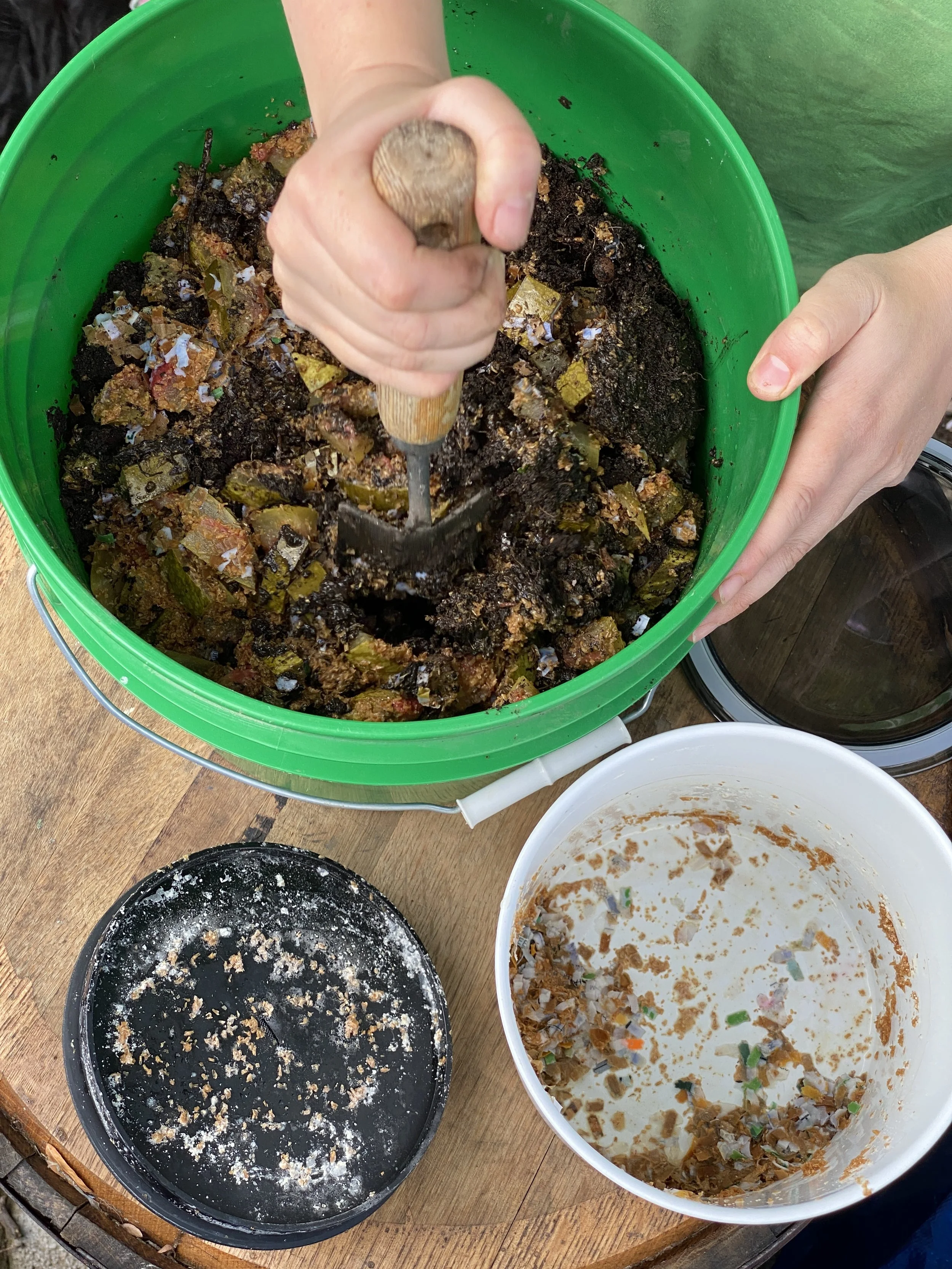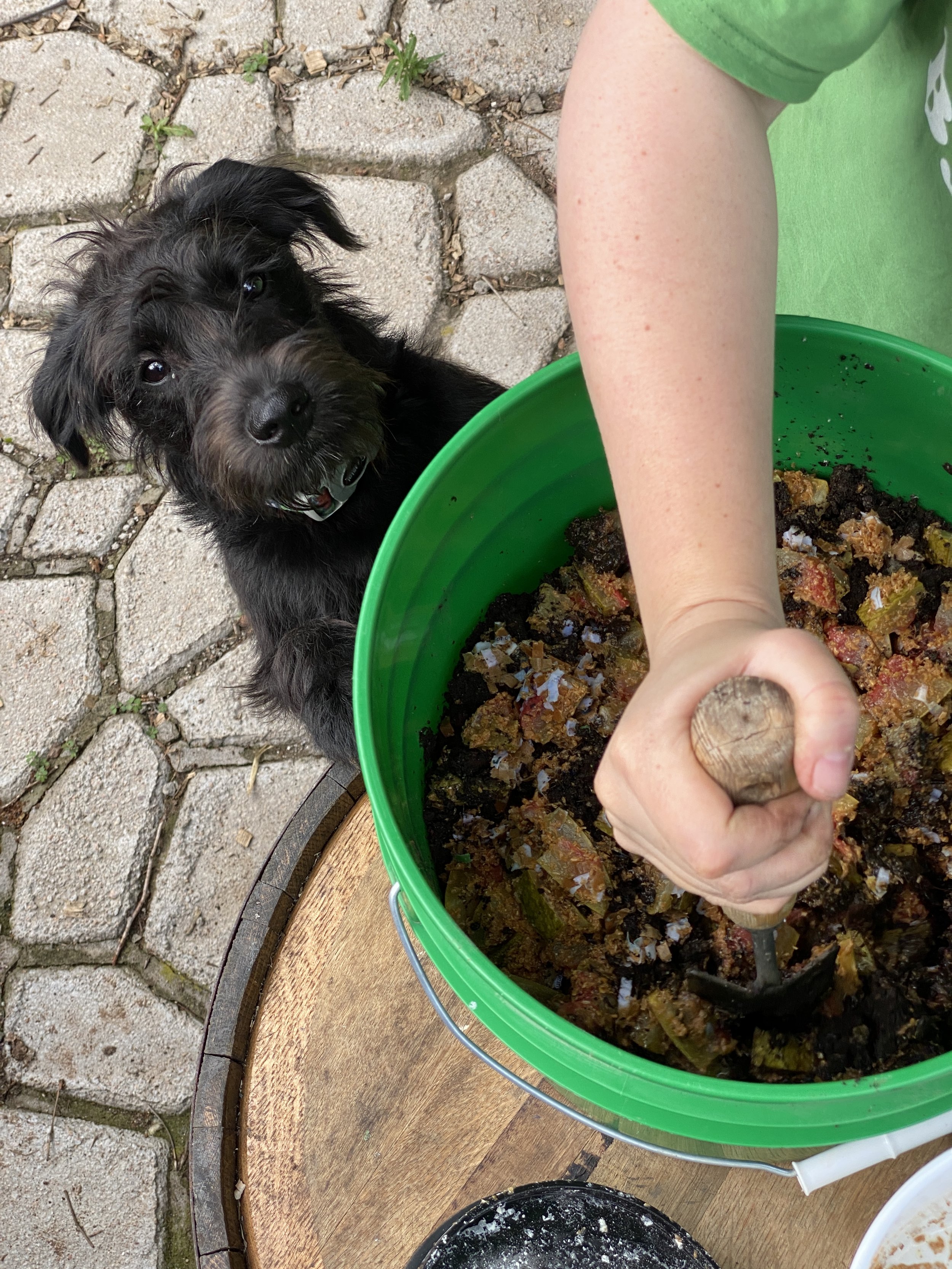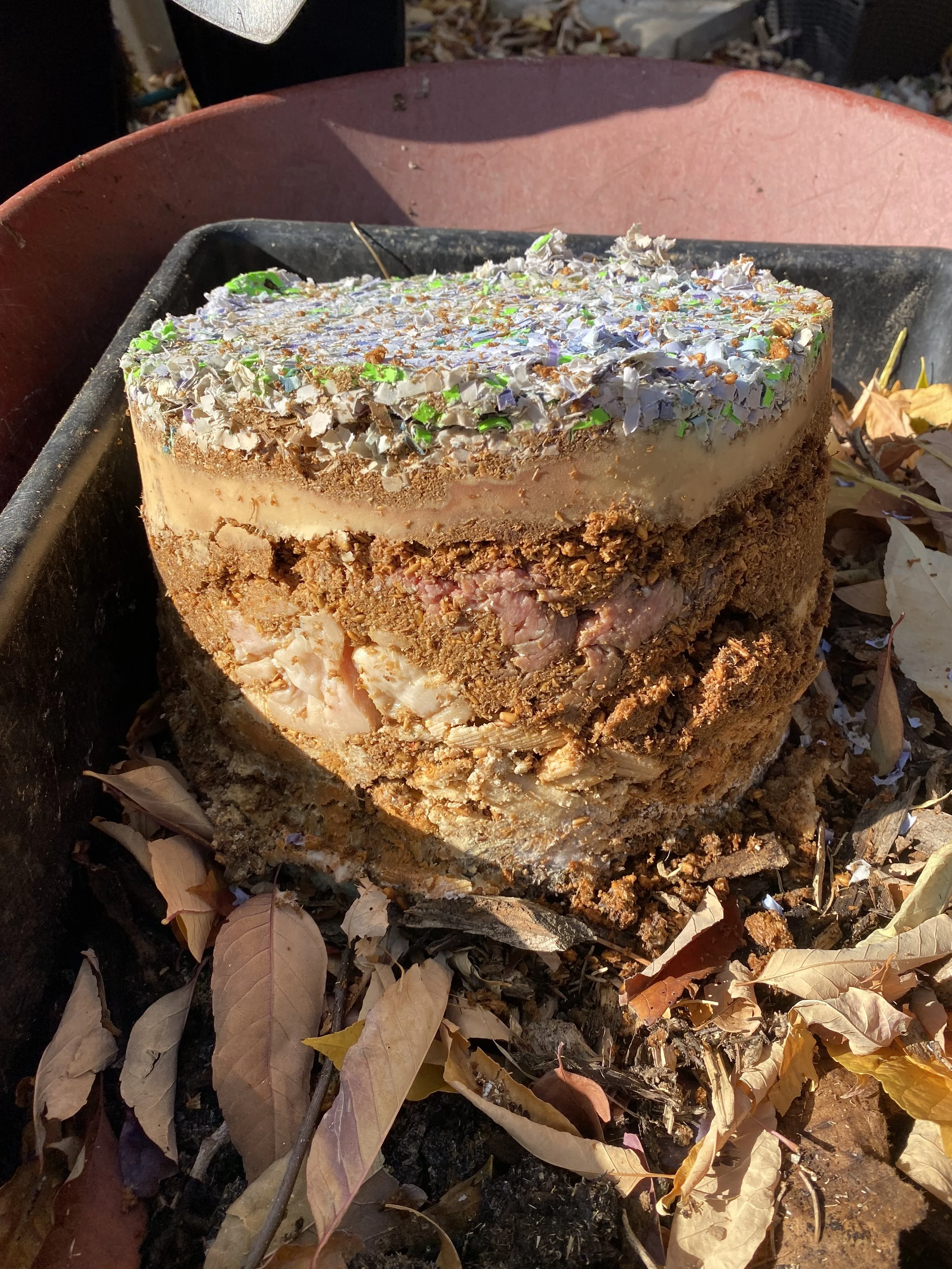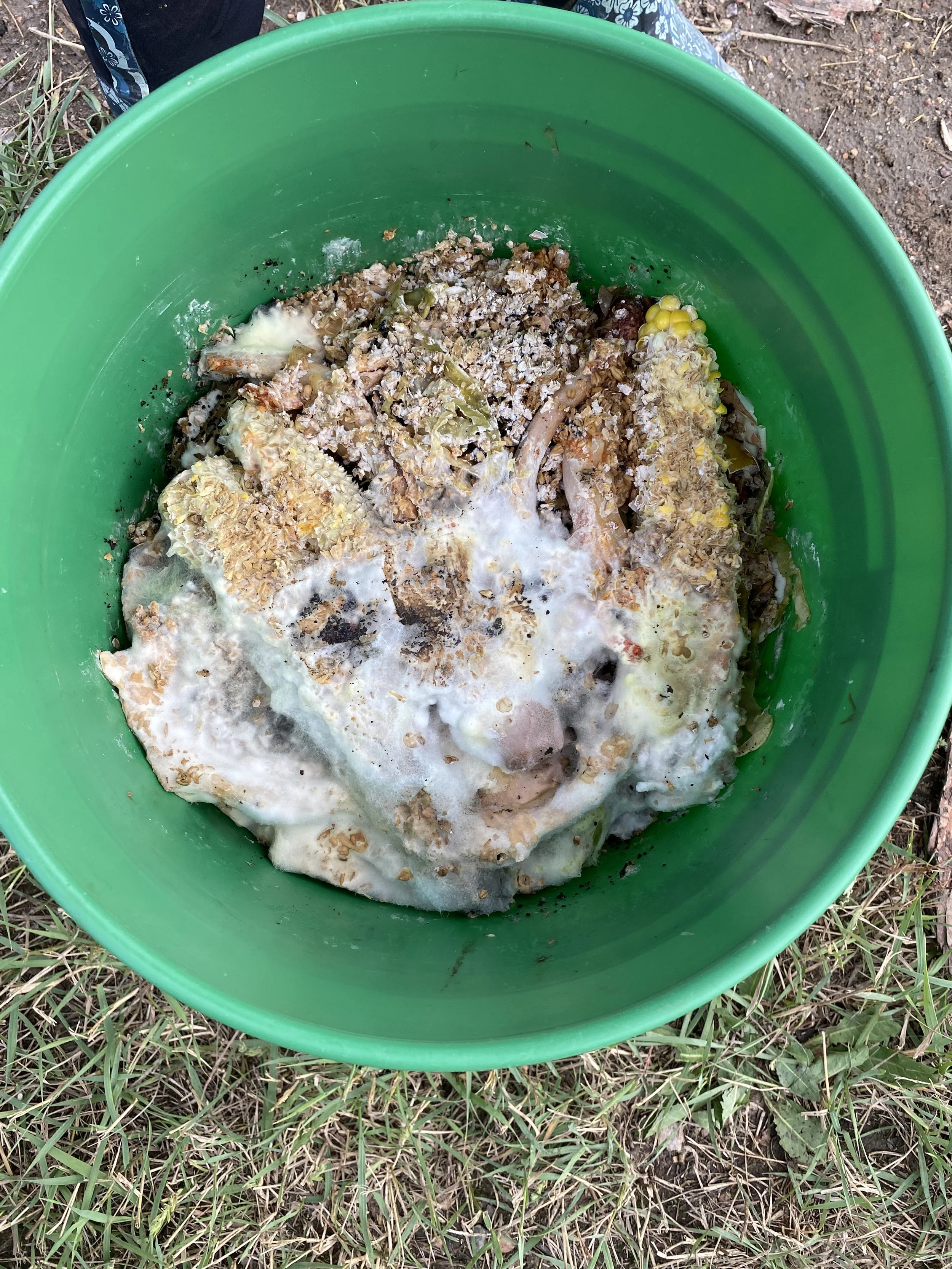3 Common Bokashi Composting Mistakes and How to Avoid Them (or Fix them!)
All things considered, bokashi composting is a pretty forgiving medium.
Once you have your first bucket under your belt, you’ll be on your way to knowing the signs of a thriving bokashi system, how to avert common issues, and what to do if you encounter problems that need fixing.
But let’s try and save you the hastle of learning from mistakes (even if they are the best teachers!).
Here’s three common mistakes we hear about and how you can fix them.
1) Too Much Moisture
The Problem
Too much moisture in a bokashi system can create a few inconveniences, but the one I get most concerned with is the potential to drown some of the beneficial microbes. When there’s too much moisture, your scraps struggle to be a good food source for the effective microorganisms, and can lead to other problems.
The Solution(s)
Shredded egg cartons make another great option for an absorbent medium.
A few solutions possible.
A) Always make sure you add absorbent materials to the bottom of your clean bokashi system before you start adding scraps. Always prime the bottom of your bucket with a handful of Upcycled Bokashi.
B) Avoid adding tons of food scraps that have high moisture content together. For example, I recently had soup scraps to add to the bokashi bucket. While you should never add straight liquid to your bucket, there’s no reason why the left over veggie scraps I used to make broth can’t be added (after I squeezed excess water out).
I also had some really stale crackers and chips that I had been saving for just such an occasion. Adding dry food scraps with wet food scraps can help balance out some of that moisture. Stale breads and cereals work great, too.
C) You can also add, in small amounts, paper products to your bucket. Just keep in mind that bokashi is really about feeding microbes nutrient dense scraps, so go light on the carbon sources in your bin. I’ve been known to leave a small layer of newspaper or cardboard in the middle of the bucket, in case I think the humidity is too high. You’ll know that the moisture is too high if you see the lid “raining” down on the bucket and if there’s a very happy white fluffy fungal bloom. White fuzz is always okay, but if you feel like there’s a lot of it, there’s probably too much moisture.
D) Finally, to help soak up excess moisture, you can use extra Upcycled Bokashi. The light and fluffy texture of the grain chaff makes an excellent absorber. Add an quarter to half a cup in the wet areas. Mix with the scraps if needed.
We recommend all new users start off using more Upcycled Bokashi than you think you need until you get the hang of things and how to “read” your bucket.
2) The Bokashi Bucket Smells Bad
That excess moisture we just talked about can be a culprit in our next common mistake.
No matter what our bokashi bucket smells like, our dog Tina is always interested in its contents.
To start, smells can be subjective. The ideal bokashi system at full throttle will smell like a fruity or sherry vinegar (or even like a sour-pickly odor). That means the fermentation microbes are happy, multiplying, and enjoying the nutrition of your bucket.
Symptom
Some smells can be in the nose of the beholder, if your system smells terribly acidic, not unlike stomach acid, that means your bucket has been knocked out of balance. You might also notice a more stuffy odor, or something that smells stale, when opening your bucket.
Solutions
For most people, you will notice the stomach acid odor when you go to process your bucket. It can be very unpleasant.
You’ll be able to identify what happened: Was it sitting in a pool of liquid in the bottom? Was there not enough Upcycled Bokashi present?
If you’re already processing the bucket’s contents for full decomposition, you will be just fine and your scraps will still breakdown with great speed. Process your bucket as normal and consider a 3-1 or 4-1 soil/carbon to bokashi biopulp if making a soil factory. If it’s still very soggy, add more carbon or consider adding holes to the bottom of the bin.
Next time, be sure to use enough Upcycled Bokashi in your day-to-day bucket additions and follow the tips above about managing moisture.
On rare occasions, we’ve seen users inadvertently kill their beneficial colony of microbes. This can happen when a bucket gets left outdoors (especially on hot days!).
Remember: If you’re hot or cold, so are your microbes. Keep them at room temp and be especially wary of warmer temperatures (anything over 80 degrees Fahrenheit).
(See our FAQs for more info on smells.)
3) Too Much Air (Oxygen)
There’s some misinformation in the bokashi world that any white fuzz in a bucket means there’s an air leak somewhere.
Believe it or not, this bokashi bucket contained raw chicken, raw fish, and other food scraps. Unfortunately, we had a freezer failure. Rather than throw the spoiled food away, we let it refreeze and then bokashi-ed the contents. Notice the compacted layers and the layers of Upcycled Bokashi. This bucket smelled like a typical boakshi ferment. No putrid odors at all! We attribute that to the absorbent bottom, using plenty of Upcycled Bokashi, and carefully compressing each layer.
In fact, what’s likely is moisture and the presence of some air.
Consider a bucket that is in the process of being filled over the course of several weeks. There’s going to be some head space in there, right? Some air is okay and isn’t a problem to the process.
What is a problem is forgetting to compress your food scraps completely.
Air pockets will begin to form, leaving gaps for the microbes to navigate and trapping oxygen in pockets. Remember: Bokashi microbes thrive in anaerobic conditions.
Symptom
The pleasant fermenting odors are slow to arrive, instead you’re noticing musty or offensive smells when you open the bucket. The bucket appears slow to ferment or even slow to break down later on when processed.
Solution
Every time you add food scraps to your bokashi system, add Upcycled Bokashi, and then compress the contents of the buckets.
You could enlist a potato masher for this job — they are excellent for this purpose!
You could also cut our a cardboard round, put it in your bucket, and use it as a tamper.
Another easy solution? After you add contents and bokashi bran, put your lid on, and hold your bucket about 6-8 inches above the floor. Drop it onto the floor that the force causes the contents to compress, expelling air from the pockets.
Potato mashers are excellent tools for compressing your bokashi bucket from layer to layer. Compress after you add bokashi bran.
Summary
Our community member had a great looking bucket! The happy white fungal clouds were enjoying the moisture from the corn cobs while also filling some of the airspace. Totally okay and beautifully fermented.
All composting methods have a bit of a learning curve.
Bokashi composting is fairly forgiving and even if you feel like, “Oh no! My bucket is totally messed up!”, you can still compost its contents (even if the contents are more memorable than you would like).
2lbs of fresh Upcycled Bokashi, small batch fermented with malted grain in Colorado. Ready for all your bokashi composting applications.
Most potential problems can be avoided by:
1) Using plenty of bokashi bran (like our fan favorite Upcycled Bokashi).
2) Controlling the moisture of your system.
3) Keeping contents compressed to expel air pockets.
Need help?
We love getting emails of bucket pictures! Send your bucket picture and challenges to grow@gardenfozco.com with the subject “Bucket Help!” and we’ll help you troubleshoot your issues.






